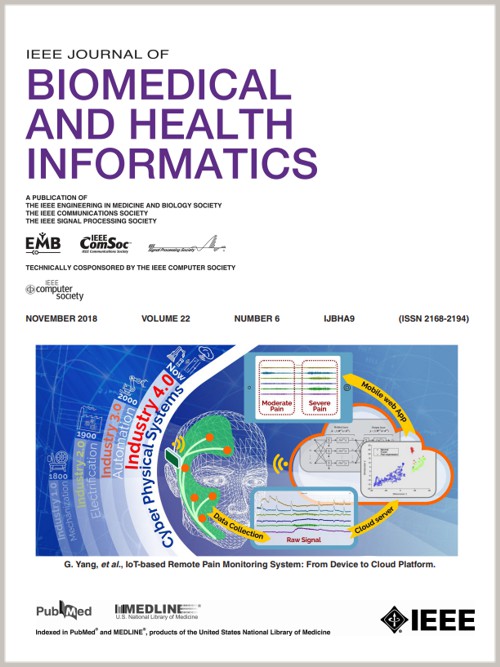Alzheimer's Disease Detection in EEG Sleep Signals
IF 6.8
2区 医学
Q1 COMPUTER SCIENCE, INFORMATION SYSTEMS
IEEE Journal of Biomedical and Health Informatics
Pub Date : 2024-10-11
DOI:10.1109/JBHI.2024.3478380
引用次数: 0
Abstract
Alzheimer's disease (AD) and sleep disorders exhibit a close association, where disruptions in sleep patterns often precede the onset of Mild Cognitive Impairment (MCI) and early-stage AD. This study delves into the potential of utilizing sleep-related electroencephalography (EEG) signals acquired through polysomnography (PSG) for the early detection of AD. Our primary focus is on exploring semi-supervised Deep Learning techniques for the classification of EEG signals due to the clinical scenario characterized by the limited data availability. The methodology entails testing and comparing the performance of semi-supervised models, benchmarked against an unsupervised and a supervised model. The study highlights the significance of spatial and temporal analysis capabilities, conducting independent analyses of each sleep stage. Results demonstrate the effectiveness of one semi-supervised model in leveraging limited labeled data, achieving stable metrics across all sleep stages, and reaching 90% accuracy in its supervised form. Comparative analyses reveal this superior performance over the unsupervised model, while the supervised model ranges between从脑电图睡眠信号中检测阿尔茨海默病
阿尔茨海默病(AD)与睡眠障碍有着密切的联系,睡眠模式紊乱往往先于轻度认知功能障碍(MCI)和早期阿尔茨海默病发病。本研究探讨了利用通过多导睡眠图(PSG)获得的与睡眠相关的脑电图(EEG)信号来早期检测老年痴呆症的潜力。由于临床场景的特点是数据可用性有限,我们的主要重点是探索用于脑电信号分类的半监督深度学习技术。该方法需要测试和比较半监督模型的性能,并以无监督模型和有监督模型为基准。研究强调了空间和时间分析能力的重要性,并对每个睡眠阶段进行了独立分析。结果表明,一种半监督模型能有效利用有限的标记数据,在所有睡眠阶段都能获得稳定的指标,其监督形式的准确率达到 90%。对比分析表明,该模型的准确率高于无监督模型,而有监督模型的准确率在 92-94% 之间。这些发现凸显了半监督模型在早期注意力缺失症检测中的潜力,尤其是在克服标记数据稀缺带来的挑战方面。消融测试肯定了时空特征提取在半监督预测性能中的关键作用,t-SNE 可视化验证了模型在区分注意力缺失症模式方面的能力。总之,这项研究通过创新的深度学习方法推动了注意力缺失检测的发展,突出了半监督学习在解决数据限制方面的关键作用。
本文章由计算机程序翻译,如有差异,请以英文原文为准。
求助全文
约1分钟内获得全文
求助全文
来源期刊

IEEE Journal of Biomedical and Health Informatics
COMPUTER SCIENCE, INFORMATION SYSTEMS-COMPUTER SCIENCE, INTERDISCIPLINARY APPLICATIONS
CiteScore
13.60
自引率
6.50%
发文量
1151
期刊介绍:
IEEE Journal of Biomedical and Health Informatics publishes original papers presenting recent advances where information and communication technologies intersect with health, healthcare, life sciences, and biomedicine. Topics include acquisition, transmission, storage, retrieval, management, and analysis of biomedical and health information. The journal covers applications of information technologies in healthcare, patient monitoring, preventive care, early disease diagnosis, therapy discovery, and personalized treatment protocols. It explores electronic medical and health records, clinical information systems, decision support systems, medical and biological imaging informatics, wearable systems, body area/sensor networks, and more. Integration-related topics like interoperability, evidence-based medicine, and secure patient data are also addressed.
 求助内容:
求助内容: 应助结果提醒方式:
应助结果提醒方式:


